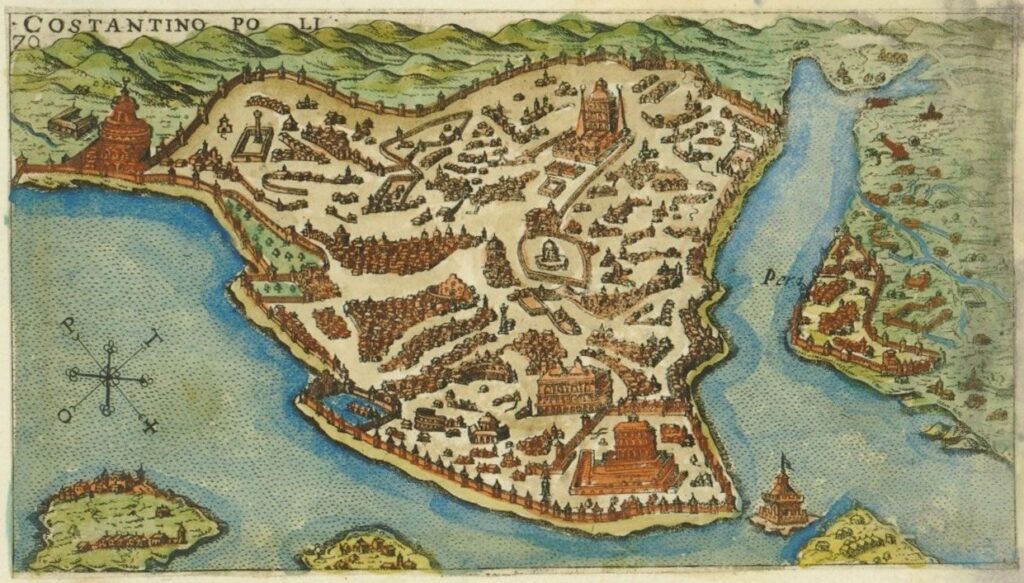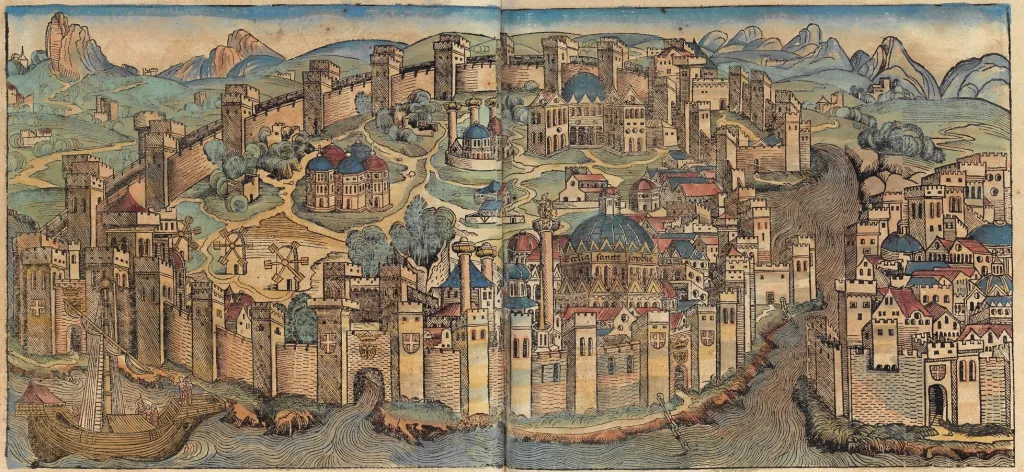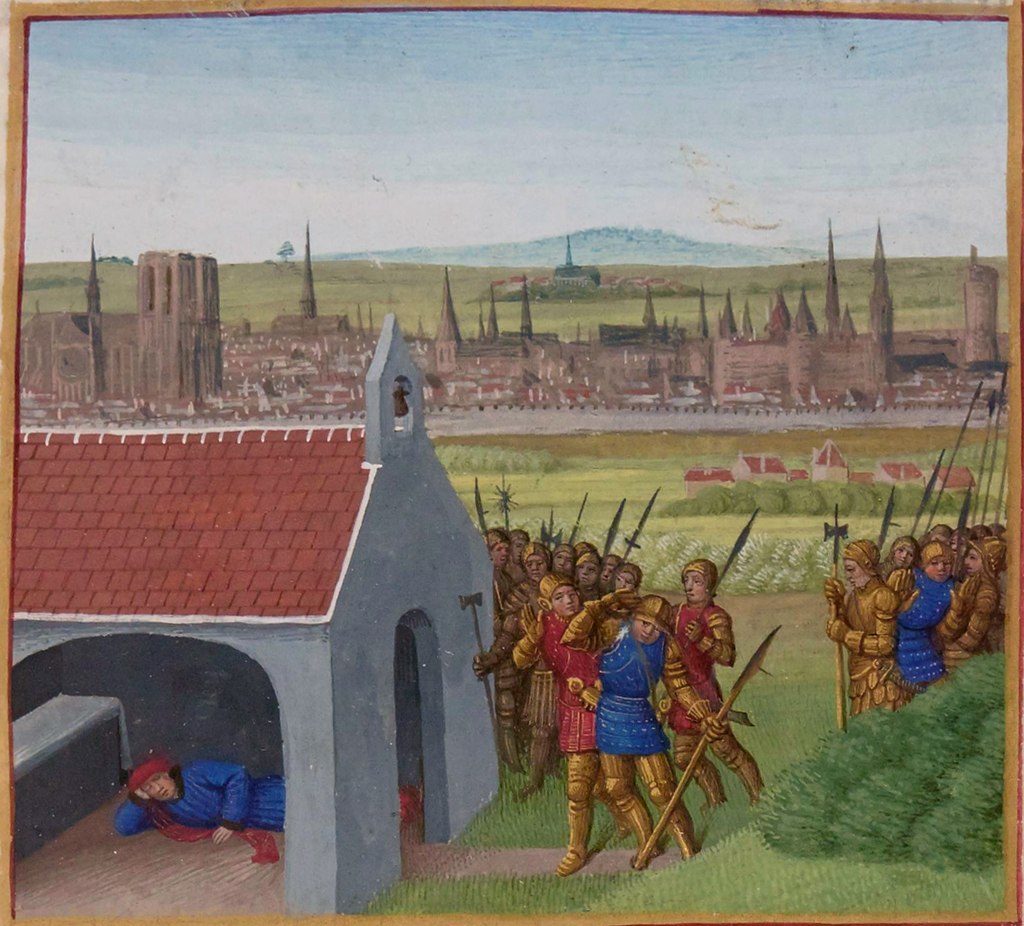Living in a big city is a completely different experience from staying out in the countryside. Today’s city-dwellers enjoy access to robust public transport and a bustling nightlife and interact with a diverse community of fellow citizens — perks of urban living that simply can’t be found anywhere else. This holds true for present times and also for the Middle Ages. People who lived in the towns and cities of medieval Europe had a markedly different lifestyle compared to their rural compatriots.
This urban and rural contrast is one of the only similarities between medieval European cities and their modern-day counterparts. In most other aspects, these large medieval European cities were strikingly different from what we see today.
Let’s take a time-traveling Eurotrip to see what life was like in the big cities of Europe during the Middle Ages.
What Were the Cities of Medieval Europe Like?
When most people think of the Middle Ages, they think of gallant knights on noble steeds or proud kings in strong castles, and learned monks cloistered in remote monasteries.
For the most part, these associations are spot on. Even though many of our current cultural traditions can trace their roots to the Middle Ages, medieval European society functioned quite differently to the modern world. The mores of the time dictated how people lived, which in turn influenced the development and growth of cities in medieval Europe.

The first thing to note when studying medieval European cities is that the definition of what constituted a “large” city was quite different back then. For starters, the population of medieval cities was far less stable than what we are used to seeing today.
The death rate was much more erratic because factors like disease, famine, or war could easily decimate medieval populations. While cities, towns, and other large settlements would experience healthy population growth during an extended period of peace, that growth could easily be reversed with just a single disastrous turn of fortune.
The cities of medieval Europe also had a distinctive look. The Middle Ages were the period when Gothic architecture became widespread across the continent, influencing the architectural design of many iconic structures.
While this influence was felt most on monuments and public buildings, even the houses of local citizens were due for an update. Instead of wattle and thatch, many commoners began using more long-lasting and durable materials like wood and plaster to build their homes.
Most urban settlements in Europe also happened to be walled cities in order to repel the threat of raiders and invaders, who were quite commonplace during this period.
In some parts of the continent, like Northern Europe, cities took longer to develop. This is thanks to the feudal system of government, which meant that the landed lords had a vested interest in keeping workers in the fields and out of the cities.
However, in the South, especially around the Mediterranean, conditions were much more favorable for the emergence of large cities. The city-states of Italy, like Genoa, Milan, and Naples deserve special mention, as they became bonafide seats of power in their own right during the Middle Ages.
The Three Greatest Cities of Medieval Europe
In the Middle Ages, cities in Europe were usually either a seat of government or a scaled-up market town. While rural populations often had to pay a tithe to their landlords, city folk enjoyed more liberty. The saying “city air makes a man free” has its origins in the Middle Ages, when city life was much more comfortable than the open countryside.
The largest cities of Europe during the Middle Ages are still standing in 2024. They include:
1. Constantinople
Historians commonly define the Middle Ages as a roughly 1,000-year period, stretching from about 500 AD to 1500 AD. The fall of the Western Roman Empire is a widely accepted starting point, and the start of the Renaissance period is considered its end.
Throughout this period, one city stood witness to all the advancements and setbacks that European civilization endured. That city was Constantinople, and there is a strong case to be made for it being the most important city in medieval Europe.
Straddling the Bosphorus Strait, Constantinople was known as Byzantium during the pre-medieval era of antiquity. It was in 324 AD that the Roman Emperor Constantine decided to create a new capital in the East.
Due to its convenient location, he chose Byzantium and renamed it Constantinople. The city was also referred to as Nova Roma, which meant “New Rome,” to acknowledge its direct connection to the glory days of the Roman Empire.

As the newly established capital of the Byzantine Empire, Constantinople would continue to expand under the reign of emperors who succeeded Constantine.
The emperor Justinian I oversaw the construction of the Hagia Sophia, a priceless architectural monument that can still be visited today, right at the dawn of the Middle Ages in 537 AD.
At the crossroads between Europe and Asia, Constantinople became a thriving hub of trade and a densely populated city. At the height of its powers during the 12th Century, the city housed a population of 400,000 people. Constantinople was an important fixture in medieval Europe’s political and religious landscape, and it held that position for nearly the entirety of the medieval era until it fell to the Ottoman Turks in 1453 AD.
The modern city of Istanbul stands where Constantinople once stood, and signs of its past glory, like Hagia Sophia, are still easily visible around the city.
2. Venice
Modern-day travelers know Venice as one of Italy’s must-see destinations. However, during the Middle Ages, Venice did not belong to any nation. Instead, it was a powerful city-state in its own right, and the Republic of Venice was an independent entity that witnessed a remarkable ascendancy during the medieval era.
When the Middle Ages began, Venice was nothing more than a small collection of refugee camps clustered around a lagoon in the North Adriatic Sea. By the time the Renaissance era came around, Venice had grown into a powerful republic and one of the most important cities in Europe. By 1500 AD, it was estimated to be the third-largest city in medieval Europe, with a population of approximately 100,000 people.

Venice’s location had much to do with its rise to power during the Middle Ages. It was the natural end-point of the Silk Route from China and ideally placed to engage in a high volume of trade with Constantinople and the greater Byzantine Empire.
The three pillars of Venice’s economy in the Middle Ages were its primacy in trade to the East, harvesting and selling salt from the salt pans and estuaries surrounding the city, and its booming shipbuilding industry.
In its early years, the Republic of Venice would accept the suzerainty of the Byzantine emperors. But by 1204 AD, the republic had acquired such strength of arms that it was able to sack the Byzantine capital, Constantinople, and plunder its treasures for Venice’s own monuments.
Even today, visitors to the Basilica di San Marco in Venice can see the bronze horse statues from Constantinople’s hippodrome, a token of Venice’s dominance in the Eastern Mediterranean during the Middle Ages.
3. Paris
Over the centuries, Paris has been called by many other names. The City of Love. The City of Lights. The City of Bridges. All of these titles honor the defining character of Paris as a lively, thriving, urban metropolis. The foundation for this bustling city was first laid down in the Middle Ages when Paris went from a humble island settlement on the Seine River to the largest city in medieval Europe.
Many of Paris’ iconic landmarks, such as its churches, abbeys, and, of course, the Notre Dame Cathedral, were built during the medieval era. These historic monuments still draw visitors to the city, even to this day. In fact, the Gothic school of architecture, which is synonymous with medieval European buildings, was founded in Paris with the construction of Notre Dame Cathedral in 1163 AD.

Paris during the Middle Ages was an extremely busy center of commerce. Its location on the banks of the Seine was perfect for the city to thrive on trade by both water and land. Among the cities of medieval Europe, Paris had the largest number of merchants, craftsmen, tradespeople, and artisans living within its walls.
Along with its commercial importance, Paris was also one of the foremost centers of learning in the Middle Ages. In an era where literacy rates among the general populace were dismal compared to today, the choice to promote and patronize higher learning was an extremely forward-thinking move by the city’s leaders.
This focus on letters and learning made Paris the top producer of illuminated religious manuscripts during the Middle Ages. Many of these manuscripts survived to the modern era and were invaluable in helping historians gain a better understanding of Europe in medieval times.
Of course, Paris did not rise to become the chief seat of power in France without some growing pains. During the second half of the Middle Ages, Paris faced many setbacks. In 1348 AD, the Black Plague struck Paris for the first time, killing one out of every three Parisians.
The deadly illness would return to Paris again in 1349 AD as well. Along with disease, political and civil strife also broke out on multiple occasions within Paris, such as the Maillotin uprising in 1382 AD, the Armagnac–Burgundian Civil War that was fought from 1407 to 1435 AD, and 16 years of English occupation from 1420 to 1436 AD.
Despite these major disruptions to the rhythm of life in Paris, the city was able to bounce back every time. By 1500 AD, when the Middle Ages were drawing to a close, Paris was by far the largest and most prosperous city in Europe. At that time, an estimated 200,000 people called the city home, including a large contingent of non-natives from England, Breton, and Normandy.
These cities of Medieval Europe stood as vibrant centers of culture, commerce, and power. Each city, with its unique geographic advantages and cultural heritage, played a pivotal role in shaping the course of European history. Their enduring legacies continue to influence modern urban landscapes, reminding us of the rich tapestry of history woven within their ancient walls.

